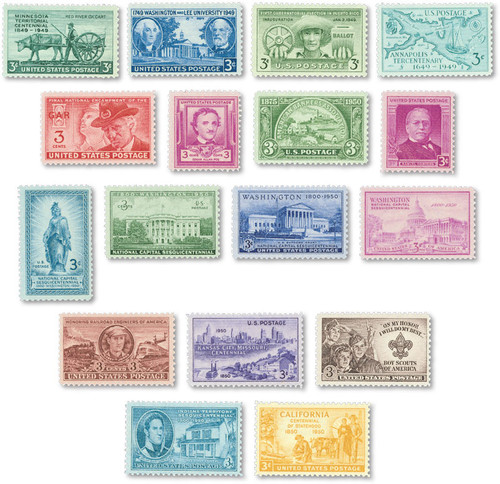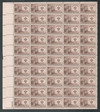
1950 3c Boy Scouts of America
# 995 - 1950 3c Boy Scouts of America
$0.35 - $28.00
U.S. #995
1950 3¢ Boy Scouts Issue
Issue Date: June 30, 1950
City: Valley Forge, Pennsylvania
Quantity: 131,635,000
Printed By: Bureau of Engraving and Printing
Printing Method: Rotary Press
Perforations: 11 x 10 ½
Color: Sepia
U.S. #995 is the first U.S. stamp honoring the Boy Scouts of America. It was issued in Valley Forge, Pennsylvania, on the opening day of the 1950 Boy Scout Jamboree in that location. The stamp features three Scouts of varying ages (and Scouting levels). The Statue of Liberty is shown in the background, reflecting the 1950 Scout theme"Strengthening the Army of Liberty."
U.S. #995
1950 3¢ Boy Scouts Issue
Issue Date: June 30, 1950
City: Valley Forge, Pennsylvania
Quantity: 131,635,000
Printed By: Bureau of Engraving and Printing
Printing Method: Rotary Press
Perforations: 11 x 10 ½
Color: Sepia
U.S. #995 is the first U.S. stamp honoring the Boy Scouts of America. It was issued in Valley Forge, Pennsylvania, on the opening day of the 1950 Boy Scout Jamboree in that location. The stamp features three Scouts of varying ages (and Scouting levels). The Statue of Liberty is shown in the background, reflecting the 1950 Scout theme"Strengthening the Army of Liberty."









